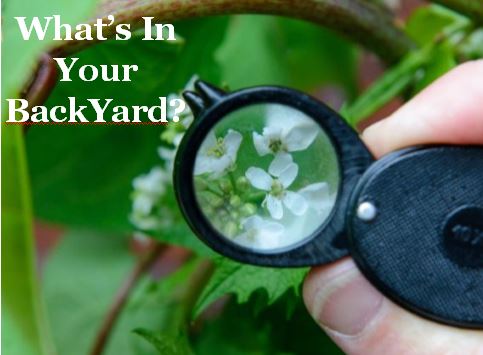Article Contributed by SLELO Staff- Robert Smith
Now that spring is here and the area is once again becoming green, invasive species will be emerging and trying to take control of your property. Managing these species early is key to a successful season of management. One reason for getting this early start is to remove the invasive plants before they produce seed and disperse to new areas of your yard or your neighbors. In addition, the soil is generally more moist and soft. This allows for easier removal with minimum roots remaining in the soil.
Since there are far too many invasive species to cover in detail in this article, we will focus on a few that commonly appear in backyards.
Garlic mustard (Alliaria petiolata) has established itself within forested areas and forest edges. It is a biennial with seedpods forming in May of the second year of their life cycle. Hand removal is an effective method for management if conducted before the formation of the seeds. At least the top half of the roots should be removed to prevent the formation of a new stem. Repeat hand pulls will be necessary for several years to exhaust the seed bank. A foliar application of glyphosate herbicide is also effective, but non-specific, so make sure not to get the chemical on other plants.

Spotted knapweed (Centaurea stoebe) pictured below, is a short-lived perennial that spreads rapidly in disturbed and man-made open areas like agricultural fields, overgrazed pastures, and backyards. Like garlic mustard, spotted knapweed can be hand-pulled prior to seeding with care to remove as much root as possible. Mowing can also be used to prevent seeding. Chemical treatments include the use of Aminopyralid, Picloram, or Clopyralid.

Leafy spurge (Euphorbia esula) pictured below, is a long-lived perennial that invades pastures, roadsides, abandoned fields, and disturbed areas like backyards. It can regenerate from small pieces of root and form new individuals from root sprouts. Management is difficult but most effective if treating small patches or combining treatment methods. Repeated cutting or mowing may limit seed production, but not spread and may gum up equipment. The following herbicide may also be effective on leafy spurge: 2,4-D, Amitrole, Dicamba, Glyphosate, Imazapyr, and Picloram. Grazing and the use of 5 species of flea beetle (Aphthona spp.) as a biocontrol may also be used to manage this invasive species. It should be noted that both leafy spurge and spotted knapweed sap may cause skin irritation.

Follow our Facebook page and stay tuned to see videos of invasives the SLELO team
finds in our yard as spring unfolds.
Photo credited to bugwood.org


